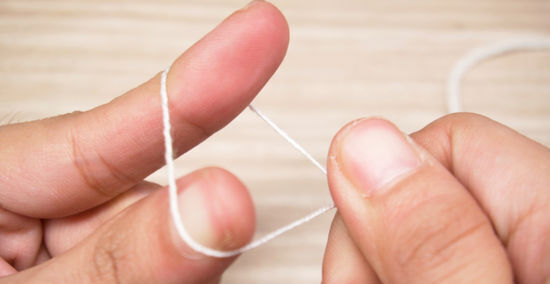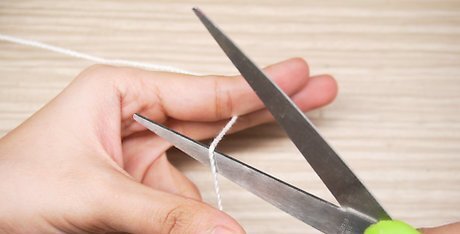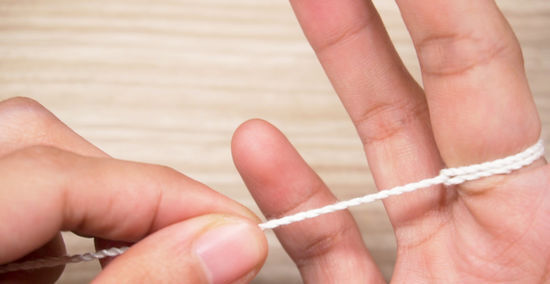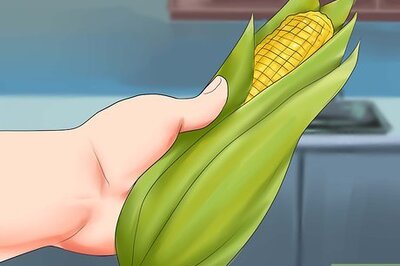
views
Removing an Old String

Let the yo-yo hang freely. Unwind the string so there is nothing wrapped around the yo-yo but the basic loop at the base. About three inches above the yo-yo, grab the string with your non-dominant hand. For some yo-yos, you will be able to just to unscrew the halves and take the string immediately off the yo-yo. However, that can damage the yo-yo. Therefore, we'll be talking about removing a string from a yo-yo without separating it.

Spin the yo-yo in a counterclockwise direction. Yo-yo string is actually one long strand that has been folded in half and twisted together with the open ends tied at one end.Therefore, spinning it removes the twist and separates the halves of the string, allowing you to slip it off the spool. As it spins, you'll start to see the base of the string form a loop that grows bigger and bigger. You only need a loop at the base large enough for the yo-yo to slip through. Once you see that, you can stop the spinning. Counterclockwise means the yo-yo will be spinning to the left.

Pull the yo-yo free of the string. To get the yo-yo through the loop, stick your fingers in between the two strings, spread the string apart, and pull the base of the yo-yo (the axle) free of the string. If the string is still good (that is, if it was undamaged before), it just needs to be retwisted.You can do that once you put it back on your yo-yo.
Putting On a New String

Choose what type of string you want to use. There are a few different varieties of yo-yo string you can purchase at hobby shops. Having a few on hand, even if it's just to experiment, is always a good idea. Here are the details: Cotton/polyester blend. This is otherwise known as 50/50. It's a very strong string and effective for just about any style of yo-yoing. If you're not sure which to buy, this should be your default. 100% polyester. This type of string is even stronger than the cotton/polyester blend. It is thin and very smooth; because of this, many professionals prefer it. 100% cotton. This style was popular a decade or so ago, but is being replaced by blends and pure polyester. Occasionally you see variants, like nylon string. These are uncommon and less popular. Do not use polyester string if your yo-yo uses a starburst response system. The friction can actually melt the polyester, breaking your string and potentially damaging your yo-yo.

Separate the two strands of the string at the unknotted end to create a loop. If you've purchased a new yo-yo string, you'll notice that it comes with one end looped and knotted for your finger and one end unknotted. You may also notice that it's twisted – a yo-yo string is actually one large string twisted in half. Place your thumb and forefinger around the unknotted end and untwist it until a yo-yo sized loop forms.

Slide the yo-yo into this loop in the string. Put your fingers in the loop to keep it open wide. The yo-yo will rest half on either side of the string, with the string on its axle. Then twist the string by crossing the strands, allowing the string to twist around the axle of the yo-yo. If you don't have an auto-return yo-yo, you're essentially done. Just spin the yo-yo clockwise (to the right) to retwist the string and help it find its balance. That's it – your yo-yo is restrung.

For auto-return yo-yos, wrap the string at least twice. Auto-return yo-yos need their strings wrapped twice (or even three times) around the axle. Once you place the yo-yo in the loop and before you retwist the string, twist it just once and then pull the yo-yo through the loop again. You may wish to do this a third time, too. If you don't wrap the string at least twice, the auto-return function will not work – the yo-yo will not come back to you on its own.

Wind up the string. Yo-yos with bearings will just spin and won't wind if you just try to wrap the string around the yo-yo freely. To get around this, use your thumb to pin down the string against the side of the yo-yo when you begin winding. After about a few winds around you can release your thumb and finish winding the string.

Replace your yo-yo string frequently. If you're a beginning yo-yo enthusiast, it's wise to replace your string every three months, or at least when you notice the string is getting frayed or your yo-yo is getting more difficult to control. A bad string can greatly affect your performance, so always keep an extra or two handy. The professionals, on the other hand, replace their strings at least once a day. The more you use your yo-yo, and the more vigorously you use your yo-yo, the more often you'll need the string replaced.
Adjusting and Tightening Your String

Cut it to its proper length. People who are taller than 5'8" may be able to use the string right out of the package. However, for those that are shorter than 5'8", shortening the string is necessary for easy and skillful play. Here's how: Unwind the yo-yo, dropping it to the floor, holding it in front of you. Put your forefinger on your belly button and wrap the top of the string around your forefinger at that point. Tie a knot in the string, making a new loop. Carefully cut off the excess string and throw it away. There is no "correct" string length, but belly button length is a good guideline. Some players prefer a slightly shorter string, while others prefer a string that's a little longer. Experiment to find the length that suits you.

Make a slipknot for your finger. A yo-yo string has a knot at the top which, counter to popular belief, is not for your finger. That knot won't adjust to the size of your finger – you need to make a slipknot to get the most out of your yo-yo skills. It's quick and easy – here's how: Fold the loop over the string Pull it through the loop Place it on your middle finger and adjust it to size

Adjust the string tension. To function at its best, a new yo-yo string will need to be tightened. To start, slip the loop over your middle finger, like you're about to play. Instead, let the yo-yo drop and rest at the end of the string. Watch what it does – if the string is too tight, the yo-yo will spin to the left, or counterclockwise. If the string is too loose, it will spin to the right, or clockwise. To remedy this, just take the string off your finger, hold the actual yo-yo in your hand, and let the string dangle down freely. The twist in the string will undo itself, quickly disappearing.




















Comments
0 comment